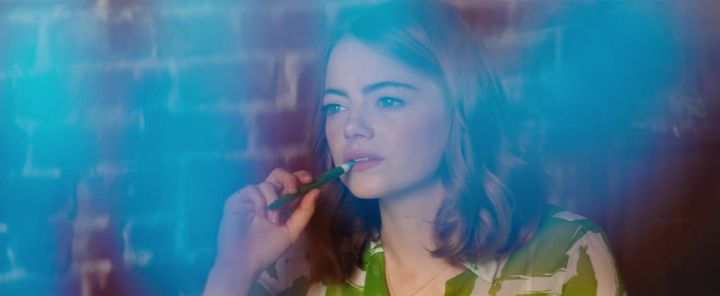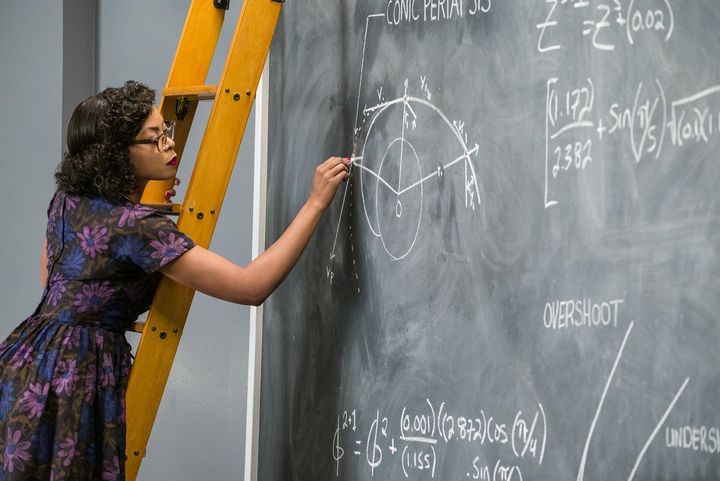Thoughts on sexism, characterization, and storytelling

Everyone is talking about the whiteness of La La Land.
And with good reason, since that critique is probably the most important and relevant one. So I will first link you to some pieces that hash it out pretty well. (This one explores more deeply how the film’s whiteness is about more than just its casting choices.)
In short, the general feeling is this: how can you have a movie about jazz and have it be so white?
And yet. Some people (read as: white people) have been complaining — either on the internet or to me directly — about critiques that center whiteness. They’re annoyed that their Oscar favorite might lose because of “political correctness,” or worse, “reverse racism” (which isn’t a thing; here’s some required reading by Zeba Blay if you don’t agree).
But the truth is, I’m not trying to be “PC” when I say that I think Moonlight and Hidden Figures deserves the honor of Best Picture more than this so-called presumptive winner. (I’m still conflicted over which one of those two I’m rooting for. Leaning towards Moonlight.) It’s not even just about representation, though that’s certainly important to me and my like-minded hippie-liberal-snowflake movie-lovers. These films deserve honors because they are artistically superior in their storytelling.
As a fiction writer, I’m primarily interested in films on the side of character development and narrative. I’m not here to tell you that parts of the dancing-in-the-sky sequence were tacky (oops I said it), I’m here to talk about storytelling. So let’s dive in.
(Spoilers ahead.)
+
I’ll begin with this: there’s nothing wrong with having a sexist male character in your movie. It’s realistic, for starters. The little ways in which Sebastian disrespects Mia as a person and undervalues her as an artist aren’t the main reason why I think the film perpetuates sexism. Rather, I have a huge issue with the way the film’s storytelling itself undermines Mia as a character and refuses to value her art as much as her male partner’s.
What do I mean by value?
Well, for starters: this film is primarily framed from Mia’s perspective, right? It starts and ends with her. In the middle, it’s relatively equal perspective-wise; we have some parts with each of them separately, and some with them together (a lot of these are in montage-form, which seems like a cop-out and obstructs the development of actual chemistry).
They are both artists trying to “make it” — and yet. It’s written such that the moments highlighting Sebastian’s art are all taking him so seriously: he’s the genius at the piano, the only person who truly values jazz (in contrast to John Legend, the innovator-type who’s portrayed as a bit of a sellout). Meanwhile, Mia’s art has to take the back seat.
I was so excited when she started writing her one-woman show. Those scenes of her working hard on that script made me feel like maybe her character was being more valued on a narrative level. But then it’s the night of the show, and… jumpcut. Show’s over.
I was devastated. Sitting there in the movie theater, I couldn’t believe that they would betray her character like that. I’m not talking about the financial failure of the show, I’m talking about the erasure of the show. And then the same thing happened with her blow-them-away audition for her big-break movie. All she does is sing a song, which I guess was mean to be an artistic rendering of what her “story” monologue during the audition was. But honestly, I was still unsatisfied.

Rare sighting of the Beautiful Woman Animal thinking and creating
If Mia’s art is in the acting and the storytelling, then let her do those things for the film’s audience. After all those drawn-out scenes of jazz piano (which I enjoyed, don’t get me wrong) you would think we would get at least one moment of the female character practicing her art.
In the words of Richard Brody, “Chazelle [the director] is interested in Mia not as a character or as a person but as an ornament, a symbol of a kind of dream and a kind of success, and he puts her into his film empty…” (from his review in the New Yorker).
Emma Stone deserves better.
Sebastian’s borderline-snobbishness about his devotion to jazz is fine a character trait, but what bothers me is how the film’s writing and direction seems to play along with it. The narrative takes his side, in a way; we have probably 15–20 minutes worth of screentime with him being serious at the piano, while the only time we see Mia act is when she’s doing badly at low-level auditions. Emma Stone’s acting is certainly highlighted, but we never really get to see what makes Mia a good actor.
La La Land tells its story from a sexist point of view that unconditionally values a man’s art over a woman’s art.
This isn’t just about the gender pay gap. This is about value-as-worldview, this is about how we treat the creators and their work.
That, combined with Mia’s willingness to give up, and Sebastian’s I’m-the-man-who-will-get-you-to-be-brave shtick, is what sunk the movie for me. Not every female character has to be a Strong Female Character™ in the masculinized Katniss Everdeen sense (god, please don’t make all your female characters like that).
But there are other kinds of strength, and other ways to respect women in your storytelling. In La La Land, that just wasn’t there.

Ways to respect women’s pursuits within the storytelling/framing of a film — exhibit A: Hidden Figures
Exhibit A: Look how easy it is to devote screen time to the work of women! Most audience members won’t even understand this math, and yet the creators of Hidden Figures chose to feature the work itself because they recognize the value of it. Screentime matters.
+
So here we are.
A recent LA Times op-ed asks us in the headline, “Will the political climate deprive ‘La La Land’ of the best picture Oscar?”
Remember that ginger who tried to sue UT Austin over affirmative action and then it turned out she wasn’t qualified for admission in the first place? (an embarrassment to gingers everywhere) — that’s what you sound like when you ask if the “political climate” will make La La Land lose.

“It’s clearly DISCRIMINATION if you don’t think I’m the best. POLITICAL CORRECTNESS is out to get me.”
Even this notion that it would be the “presumptive winner” in the first place reinforces an all-too-common frame of thinking where white art is somehow considered more “general.” Why do you think Adele won so many Grammys? It’s an aspect of white privilege that we don’t talk about very much: the ability to always be the default, and to never be categorized as “niche” unless you want to be.
So if Moonlight wins the Oscar, please don’t complain that the Academy was trying to be political correct. Because if you think that the whitest film should have been the winner by default, you’ve got some soul-searching to do.
+
Thank you for reading! Please share to support my work and to help take down the white supremacist patriarchy ❤ (and send this to anyone you know at the Academy, haha).
You can follow me on Medium here, on Twitter here, and check out my book diary/blog on Instagram here. - AH
